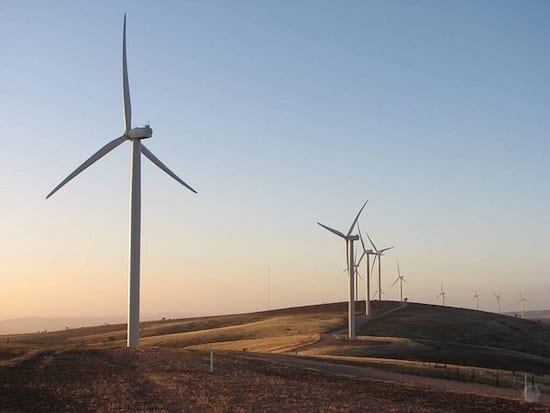Renewable energy developer Tilt Renewables expects to make a final decision on its proposed big battery next to the Snowtown wind farm in South Australia in the next 7 months, but appears to have dropped plans to combine this with a new solar project.
Tilt is currently conducting a strategic review and potential sale for its Snowtown 2 wind facility, which is also the subject of court action initiated by the Australian Energy Regulator over its performance on the day of the state-wide blackout in 2016, but neither of these will affect the Snowtown 1 facility.
A proposal to add a 21MW/26MWh battery storage system, along with a 44MW solar farm connecting to the Snowtown 1 facility was announced way back in February, 2018, with the then state Labor government contributing $7 million towards the project.
RenewEconomy has been told that the battery storage proposal remains on track, with a final decision on the configuration and investment to be made by the first quarter of 2020. But the solar plant idea has been set aside.
The battery will join a rapidly growing number of grid-scale battery storage installations in South Australia, which already boasts the world’s biggest lithium-ion battery, the Neoen’s 100MW/129MWh Tesla big battery at Hornsdale, and AGL’s 30MW/8MWh Dalrymple battery on the Yorke Peninsula.
Nexif is building a 10MW/10MWh battery at its 212MW Lincoln Gap wind farm near Port Augusta, with the battery size likely to increase as the wind facility also expands into the future. Sanjeev Gupta’s Simec Zen Energy also has planning approval for a 100MW/100MWh Playford Utility Battery near Whyalla, to support its 280MW Cultana solar farm.
Numerous other projects have also proposed big batteries, including Solar River, Bungama Solar, Robertstown Solar and Crystal Brook, all proposing significant hybrid projects that will combine large amounts of solar with battery storage, and in some cases wind energy as well.
Tilt originally saw the addition of solar and a battery at Snowtown would be useful to better match daily electricity demands, with the battery reducing the effect of short-term variability from solar and wind.
CEO Deion Campbell said at the time that the battery would operate differently than Hornsdale’s Tesla big battery and will focus on time shifting wind and solar output, and boosting the complex’s “firm” capacity.
However, it now appears that the company has gone cool on the solar component, possibly because of the huge amount of large scale solar being built or in the pipeline in the region, and the growing impact on day-time wholesale prices.



